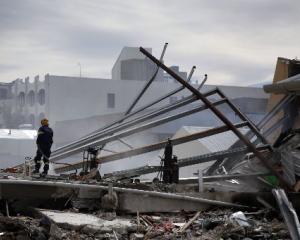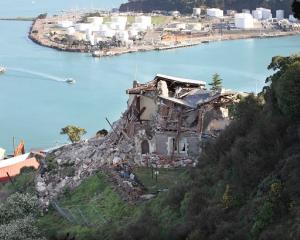The Christchurch earthquakes still had a major effect on the latest balance of payments, despite Statistics New Zealand changing the rules at the last minute about how reinsurance money is treated.
Statistics NZ said reinsurance flows from the September and February earthquakes would be treated as capital transfers, instead of current transfers, because the impact was capital, rather than current in nature.
The current account deficit narrowed in the three months ended March but more than the market was expecting.
The unadjusted deficit of $97 million compared to the market expectation of $900 million.
ASB economist Jane Turner said the current account balance was highly seasonal, due to trade flows. Adjusting for seasonal effects, the deficit narrowed to $1.7 billion from $2.8 billion in the previous quarter.
The smaller deficit was due to a stronger traded goods surplus as well as less income earned in New Zealand by foreign companies.
"The income drop is largely due to insurance industry losses arising from the Christchurch [February] earthquake," she said.
Figures showed there was a $1 billion fall in income from foreign investment.
As a result, there was likely to be a temporary reduction in the income deficit, Ms Turner said.
"As the economic recovery continues to gain traction and profitability of New Zealand companies continues to improve, foreign earnings will recover to previous levels. This will underpin further widening in the current account in the future."
The financial accounts showed a net investment outflow of $10 billion out of New Zealand in the quarter, she said. That was made up of a $13.3 billion outflow of New Zealand investment overseas and $3.3 billion inflow of foreign investment.
The earthquake in February was the dominant feature of the financial accounts with $7.6 billion of accounts receivable relating to reinsurance claims the key driver of the $13.3 billion flow of investment overseas, Ms Turner said.
Yet-to-be-paid claims were a financial asset for those earthquake victims who would receive an insurance payout.
Once the payout was made, the claims would transfer to the other side of the ledger.
In the quarter, there was a net $4 billion of government-issued debt purchased by foreign investors and $1.3 billion of New Zealand shares sold to foreign portfolio investors. The $4 billion was part of the $380 million a week, on average, the Government was borrowing to fund the economy.
Partially offsetting that inflow was a reduction in bank liabilities as banks reduced their overseas debt and increased their domestic deposits.
At March 31, New Zealand's net international liabilities were $148.2 billion, compared with $158.6 billion at December 31.
Ms Turner said the earthquake also had a temporary impact on the international investment position of the country with the $10.4 billion fall driven by lending to foreigners, rather than borrowing. The lending included outstanding reinsurance claims arising from the February earthquake.
"The dramatic reduction in the net debt position will reverse out as earthquake insurance claims are settled. Beyond this, we have been seeing a steady reduction in the net debt position over the past year, which has helped reduce New Zealand's vulnerability to offshore credit markets," she said.
New Zealand's surplus on trade in goods and services rose $275 million in the March quarter, mainly due to higher export prices. Increases in dairy products drove exports of goods higher, while crude oil and forestry exports also increased.






